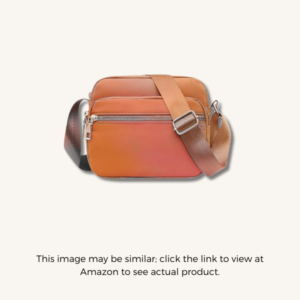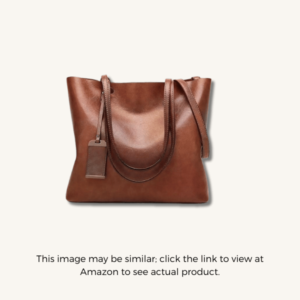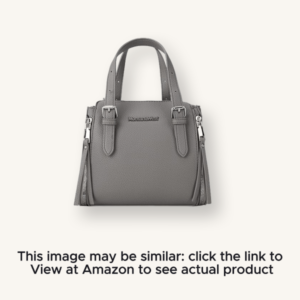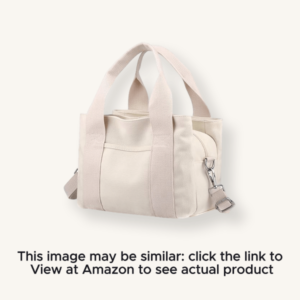The Decline of Michael Kors: Can the Brand Regain Its Luxury Status?
Michael Kors has been a significant player in the world of luxury fashion for decades known for its glamorous Jet Set aesthetic, modern elegance and affordability within the high-end market.
However, recent years have not been kind to the brand which has faced challenges in maintaining its exclusivity and reputation as a luxury label.
What happened to Michael Kors, and can the brand make a comeback in today’s rapidly shifting fashion industry?
We will explore the factors contributing to Michael Kors’ decline analyze the brand’s current position and discuss strategies that could help it regain its foothold in the competitive luxury market.
Explore the detailed comparison between Coach and Michael Kors to find out which brand suits your style better.
The Origins and Rise of Michael Kors
To understand the brand’s current struggles, it’s essential to look back at the beginnings of Michael Kors.
Founded in 1981 by the American designer Michael Kors, the brand quickly gained a reputation for its luxurious take on American sportswear.
Its classic, yet modern designs resonated with a fashion-forward audience looking for a blend of sophistication and casual style.
By the 2000s, Michael Kors had expanded its portfolio, introducing accessories, footwear, and fragrances, all of which were embraced by both celebrities and everyday consumers alike.
Michael Kors’ iconic “MK” logo, prominently displayed on its handbags and accessories, became a status symbol worldwide.
For a long time, it stood alongside brands like Louis Vuitton and Gucci in the luxury handbag space, offering aspirational pieces at a price point that, while expensive, was more accessible than many high-fashion brands.

The Turning Point: Diffusion Line and Overexposure
The introduction of the “Michael Michael Kors” diffusion line in 2011 marked a critical turning point for the brand.
This collection was designed to make Michael Kors more accessible to a wider audience by offering more affordable products that maintained the brand’s signature look.
While this strategy initially seemed like a success, allowing the brand to attract more middle-market consumers, it ultimately began to dilute its luxury appeal.
The increased accessibility of the brand led to overexposure.
Suddenly, Michael Kors handbags were everywhere, from outlet malls to discount websites. For a luxury brand, ubiquity can be a double-edged sword.
While high sales volumes are desirable, the perception of exclusivity is essential to maintaining a luxury image.
Over time, the wide availability of Michael Kors products diminished the brand’s perceived value, and many consumers began to question whether it was still worthy of being called “luxury.”
The Impact of Changing Consumer Preferences
Another factor contributing to Michael Kors’ decline has been the shift in consumer preferences.
Fashion trends are ever-changing, and over the past decade, there has been a noticeable shift towards minimalism and understated aesthetics in the luxury market.
Brands like Celine and Bottega Veneta have gained popularity for their sleek, logo-free designs that emphasize craftsmanship over conspicuous branding.
In contrast, Michael Kors has often been associated with logo-centric, flashy designs, which have fallen out of favor with many luxury consumers.
While the brand once thrived on its aspirational image, today’s shoppers often gravitate toward timeless designs. For example, the Louis Vuitton Neverfull remains a staple for many, thanks to its versatile and classic appeal.
Furthermore the rise of the “old money” aesthetic, characterized by timeless, discreet luxury has made it more challenging for brands like Michael Kors, which built their reputation on visible logos and bold, trend-driven designs.
As younger, affluent consumers gravitate towards understated elegance, Michael Kors has struggled to adapt its offerings to match these evolving tastes.
Increased Competition and the Rise of New Luxury Brands
The luxury fashion landscape has also become more competitive in recent years with new brands and designers entering the market and established brands evolving to stay relevant.
The rise of streetwear and athleisure has further disrupted the traditional luxury market, with brands like Balenciaga and Off-White blending high fashion with casual, sporty aesthetics.
These new players have captured the attention of younger, trend-conscious consumers further diverting attention away from brands like Michael Kors.
In addition to the rise of new luxury competitors, established brands like Louis Vuitton, Gucci, and Chanel have continued to innovate maintaining their desirability by striking the perfect balance between heritage and modernity.
The shift in luxury preferences often leads to discussions about iconic handbags like the Kelly vs. Birkin. These bags not only represent status but also reflect the changing landscape of luxury drawing attention away from brands like Michael Kors.
Michael Kors by comparison, has struggled to keep up with these changing dynamics, and its designs have been seen as lacking the same level of innovation and aspirational value.
The Outlet Culture and Discounting Problem
A significant factor that has eroded Michael Kors’ luxury status is the brand’s reliance on outlet stores and frequent discounting.
While outlets can help drive sales, they can also undermine the exclusivity and prestige that luxury brands are known for.
The widespread availability of Michael Kors products at discounted prices has further diminished the brand’s premium image leading many consumers to question the value of paying full price for its items.
For luxury brands, carefully managing pricing and distribution is essential to maintaining their desirability.
The perception that a luxury item is rare and difficult to obtain is often a crucial part of its appeal. Michael Kors’ heavy reliance on discounting and outlet sales has created the opposite effect making the brand feel more like a mainstream label than an exclusive luxury brand.

Can Michael Kors Regain Its Luxury Status?
Despite the challenges Michael Kors faces, it is not impossible for the brand to regain its position as a luxury leader. However, doing so will require strategic adjustments across several areas.
Repositioning and Design Evolution:
Michael Kors could explore repositioning itself to align with current fashion trends. This might involve shifting towards more minimalistic, logo-free designs that emphasize craftsmanship and quality over branding.
By evolving its aesthetic to match the desires of modern luxury consumers, the brand can regain relevance in the competitive market.
Limited Edition Collections and Collaborations:
Introducing exclusive, limited-edition collections or collaborating with influential designers and artists could help Michael Kors regain its aspirational value.
Limited runs of high-quality, exclusive items can create a sense of scarcity and desirability, reigniting interest among consumers who may have turned away from the brand.
Sustainability and Innovation:
Today’s luxury consumers are increasingly concerned with sustainability and ethical production practices.
By embracing sustainability and incorporating innovative materials and technologies into its products, Michael Kors can appeal to environmentally conscious consumers and position itself as a forward-thinking luxury brand.
Revamping Distribution and Pricing:
To rebuild its premium image, Michael Kors will need to re-evaluate its distribution strategy.
This might involve reducing its presence in outlet stores, limiting discounts, and carefully selecting retail partners that align with its luxury positioning.
By creating a sense of exclusivity and scarcity, the brand can regain its desirability.
Digital Engagement and Influencer Marketing:
Leveraging digital platforms and social media to engage with its target audience is essential in today’s fashion landscape.
Michael Kors can strengthen its online presence through effective digital marketing strategies and collaborations with influencers who align with the brand’s vision.
By fostering an interactive brand community, the brand can attract new customers and build a loyal following.
Addressing Customer Feedback and Modernizing Brand Identity
To fully reclaim its former prestige, Michael Kors must pay closer attention to consumer feedback.
Today’s luxury buyers are increasingly seeking personalization and meaningful engagement with the brands they support. Understanding their evolving desires can pave the way for more innovative and tailored offerings.
One way Michael Kors could reinvigorate its brand is through interactive campaigns that invite customer collaboration.

By prioritizing direct input from its loyal customer base, the brand can ensure it’s responding to the needs of its target audience.
This can go hand-in-hand with strategic shifts, such as introducing limited collections or providing exclusive access to bespoke or highly customizable items.
This would not only increase engagement but also foster a sense of exclusivity and personal connection, both of which are crucial to maintaining luxury status.
Plus, aligning with digital transformation trends will be key to attracting a new generation of tech-savvy luxury shoppers.
Many high-end brands have embraced augmented reality (AR), virtual showrooms, and AI-driven personalized shopping experiences.
Michael Kors could easily follow suit by offering a seamless online and offline shopping experience. Embracing these technologies would modernize the brand and enhance the shopping journey adding a fresh layer of exclusivity.
Sustainable Fashion: A New Avenue for Luxury Brands
Sustainability in fashion has emerged as a driving force for modern consumers particularly among younger demographics.
Eco-friendly practices are becoming increasingly synonymous with luxury, as buyers want to feel they are investing in products that are not only high-quality but also ethically produced.
For Michael Kors, sustainability represents an opportunity to reposition itself as a responsible luxury brand.
The brand could benefit from introducing a sustainable line, featuring products made from environmentally-friendly materials like recycled leather or organic cotton.
Moreover, incorporating transparency into their supply chain practices, such as outlining the environmental impact of each item and showcasing their efforts to reduce carbon footprints can appeal to the ethically conscious market.
By categorize sustainability, Michael Kors can enhance its image while addressing one of the most important concerns of modern consumers.
Chanel, for instance has taken a similar route by pledging to improve its environmental footprint, something Michael Kors could emulate to modernize and enhance its reputation in the luxury market.
By adopting responsible manufacturing and packaging methods, Michael Kors would not only keep up with industry trends but also attract a new generation of conscientious buyers.

Pricing and Distribution: A Strategic Balancing Act
Maintaining a brand’s luxury status requires meticulous control over pricing and distribution.
As previously discussed, Michael Kors has struggled with this balance by making its products widely available in discount and outlet stores, which eroded its exclusivity.
To rebuild a premium image, Michael Kors needs to reduce its reliance on discount-driven retail channels.
A focus on maintaining higher price points while limiting accessibility through more selective distribution can rekindle its luxurious appeal.
By pulling back from outlets, the brand can create scarcity and heighten desirability two factors critical to the luxury consumer mindset.
At the same time, Michael Kors should be careful not to overcorrect. The brand must still offer accessible luxury, with signature pieces that cater to aspirational buyers who are not ready to invest in ultra-premium brands like Hermès or Louis Vuitton.
One strategy could be to differentiate between exclusive flagship items available only in boutiques and mass-market collections sold online or in department stores.
This tiered approach would allow Michael Kors to retain some accessibility while reviving the exclusivity that comes with limited releases.
Another critical aspect involves using pricing strategies that highlight craftsmanship and material quality. Luxury pricing needs to reflect more than just brand prestige; it should also communicate the uniqueness and longevity of the product.
By investing in higher-quality materials and showcasing the meticulous craftsmanship behind each item, Michael Kors can justify its premium prices while appealing to buyers who prioritize durability over trendiness.
The Role of Digital Platforms and Influencer Collaborations
The rise of digital marketing and influencer culture has transformed how luxury brands engage with their audiences.
In today’s market, a strong online presence is not optional it’s a necessity. Michael Kors must invest heavily in digital strategies that build a sense of community around the brand.
Collaborations with influential fashion bloggers and celebrities could help reframe its public image and attract new customers especially among younger, social media-savvy demographics.
One example of successful digital engagement is Gucci’s innovative use of digital storytelling and influencer marketing.
By collaborating with high-profile influencers who resonate with their target audience, Gucci has managed to stay relevant and appealing to younger luxury consumers.
Michael Kors can follow a similar path by partnering with influencers who align with its vision of accessible luxury, modernity and sophistication.
These influencers could also be used to promote exclusive product drops or showcase behind-the-scenes content, further engaging customers and enhancing the brand’s desirability.
Moreover, influencer marketing can help Michael Kors reposition its identity from “overexposed” to “in-demand.”
By choosing influencers carefully focusing on individuals who promote timeless luxury and understated elegance the brand can align itself with contemporary trends while staying true to its roots.
The Future: Is a Comeback on the Horizon for Michael Kors?
Given the challenges Michael Kors faces, the question remains.
Can the brand truly make a comeback in the luxury space?
The answer is yes, but only if it implements strategic changes across design, pricing, distribution and digital engagement.

By addressing its overexposure, introducing sustainable practices, and evolving its designs to align with current luxury trends. Michael Kors can reposition itself as a modern yet timeless luxury brand.
Furthermore, adopting innovative digital strategies and collaborations will help the brand connect with a new generation of consumers, while a refined approach to pricing and distribution can re-establish its exclusivity.
If Michael Kors can balance these elements there is no reason why it cannot regain its status as a prominent player in the world of luxury fashion.
The key to success lies in the brand’s ability to adapt while maintaining its identity, embracing modern trends without losing sight of the elegance and sophistication that first made it famous.
If you’re looking for a stylish yet functional option that represents the best of Michael Kors’ contemporary designs.
Consider the Michael Kors Contemporary Shoulder Bag.
This versatile bag is perfect for daily use or special occasions, combining modern aesthetics with practical features.
Michael Kors Contemporary Shoulder Bag Review
Key Features and Review
| Feature | Description | Why It Matters |
|---|---|---|
| Size | 12 x 5 x 10 inches | Perfect size for daily essentials without being bulky |
| Weight | 1.2 lbs | Lightweight design for easy all-day carrying |
| Material | Canvas | Durable and easy to clean, suitable for everyday use |
| Closure Type | Zip top closure | Keeps items secure and protected |
| Design | Elegant and modern aesthetic | Versatile for both casual and formal outfits |
| Compartments | Multiple pockets for organization | Ensures easy access to keys, wallet, and phone |
| Strap | Adjustable shoulder strap | Customizable fit for added comfort |
| Color Options | Available in various colors | Options to match different styles and preferences |
| Care Instructions | Machine washable | Simple maintenance for busy lifestyles |
| Warranty | 1-year after-sales support | Peace of mind regarding quality and durability |
Pros:
- Stylish and modern design suitable for various occasions
- Lightweight and comfortable to carry
- Multiple compartments for organized storage
- Easy maintenance with machine washable fabric
Cons:
- Limited capacity for larger items
- Canvas material may be less durable than leather
Why We Love It:
The Michael Kors Contemporary Shoulder Bag stands out for its elegant design and practical features.
Its lightweight construction (only 1.2 lbs) makes it ideal for all-day wear while the zip top closure ensures that your belongings stay secure.
The bag’s versatile aesthetic allows it to complement both casual and formal outfits effortlessly.
We particularly appreciate the various color options available, enabling you to choose one that best fits your style.
The multiple compartments are perfect for keeping small items organized, and the adjustable strap adds to its overall comfort.
With easy care instructions, this bag is a perfect companion for those with busy lifestyles.
Who It’s For:
This shoulder bag is perfect for fashion-conscious individuals looking for a stylish yet functional accessory.
It’s an excellent choice for daily use, whether for work, outings, or special events.
If you seek a blend of sophistication and practicality, the Michael Kors Contemporary Shoulder Bag is an ideal pick.
With its one-year warranty, it also suits anyone who values reliability and quality in their handbags.
FAQs About Michael Kors
Is Michael Kors Considered a Luxury Brand?
Michael Kors is often classified as an “accessible luxury” brand. While it offers high-quality products and stylish designs.
The brand has made itself available to a broader audience through outlet stores and frequent discounts.
This approach makes Michael Kors more affordable compared to traditional luxury brands like Louis Vuitton or Gucci which focus on exclusivity.
However, many fashion enthusiasts argue that this accessibility dilutes the luxury perception, moving it towards the premium or mid-tier market.
Who is Michael Kors’ Husband?
Michael Kors is married to Lance LePere, a fellow fashion professional. The couple met in the early 1990s when LePere worked as an intern at Michael Kors’ fashion house.
They got married in 2011 in Southampton, New York, after New York legalized same-sex marriage.
Their relationship has been celebrated for its longevity and mutual respect, making them a prominent couple in the fashion industry.
Is Michael Kors a Billionaire?
Although Michael Kors himself is not a billionaire, his fashion empire has been incredibly successful.
As of recent estimates, his personal net worth is in the hundreds of millions, largely due to the brand’s global reach and profitability.
The Michael Kors brand is part of Capri Holdings, a publicly traded company valued in the billions, which also owns other luxury brands like Versace and Jimmy Choo.
What Nationality is Michael Kors?
Michael Kors was born in the United States making him an American.
He was born Karl Anderson Jr. in Long Island, New York, in 1959, but later changed his name after his mother remarried.
Kors has been deeply influenced by American culture and lifestyle, which is reflected in his brand’s modern, jet-set aesthetic.
Why is Michael Kors So Expensive?
Michael Kors products are priced higher due to a combination of brand value, craftsmanship, and materials used.
The brand positions itself in the “affordable luxury” market, offering designer-level quality and style. Factors like leather quality, meticulous stitching, and fashion-forward designs contribute to the cost.
Additionally, the brand’s marketing and endorsement by celebrities help justify its higher price point.
Which is a Bigger Brand: Coach or Michael Kors?
In terms of global recognition and market share, both Coach and Michael Kors are significant players in the accessible luxury segment.
Coach has a slightly stronger reputation for craftsmanship and leather goods, while Michael Kors is more associated with trendy designs and fashion accessories.
Coach is generally considered the bigger brand by revenue and heritage, but both brands compete closely in the same market niche.





